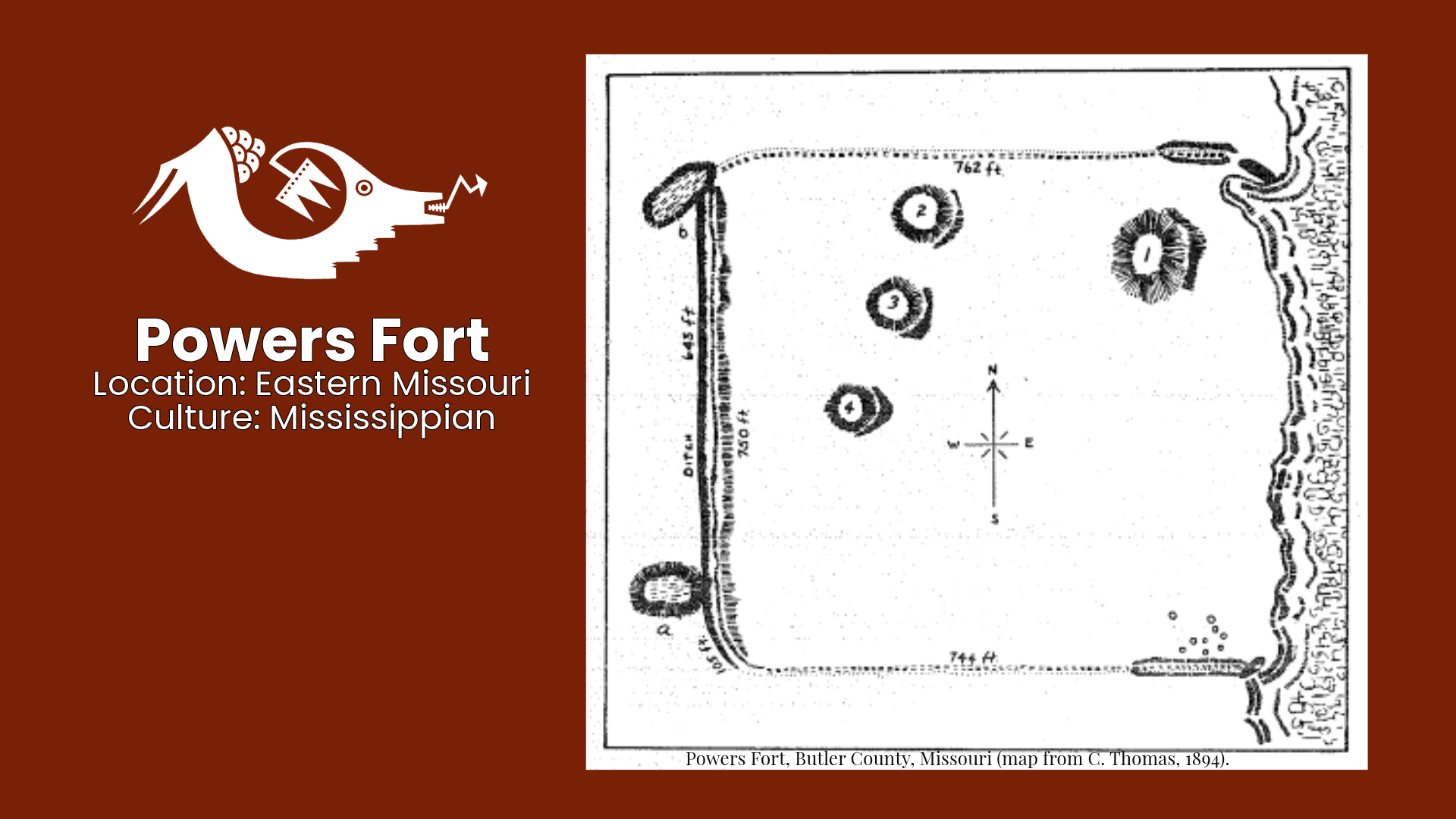The Archaeological Conservancy completed acquisition of the Powers Fort site in southeastern Missouri in April 1980. The site consists of about 44 acres of the 106-acre farm purchased by the Conservancy, including the farmhouse and buildings.
Powers Fort is a major civic-ceremonial center of the Mississippian culture and dates to around A.D. 1350. It is thought to be the center of the Powers Phase group in the Black River drainage of southern Missouri. In addition to the Mississippian features of the site, there is evidence to suggest habitation dating to about 7000 B.C.
Powers Fort consists of four mounds surrounded by an earthen embankment that measures approximately 750 feet on a side. The major feature is a temple mound 120 feet long and 20 feet high. A smaller mound is 100 feet in diameter and six feet high. The other two mounds are 80 feet in diameter and four feet high. Despite more than 100 years of agricultural use, the large temple mound remains in excellent condition and the smaller mounds are intact.
The Conservancy acquired the site from the estate of Walter Koehler, who had farmed the land since 1908. The Koehler family assisted with the acquisition and the site was renamed in their honor.
Powers Fort is important because it is the largest single-component Mississippian site in the area, and a ceremonial center of the Powers Phase of the Middle Mississippian cultural tradition. It is also significant because it is in excellent condition, while most comparable sites have been severely damaged or destroyed by urban development and modern agricultural practices. The earliest residency appears to have been a Dalton complex dating to about 7000 B.C
Powers Fort was first investigated by W.P. Norris in 1882. Norris was an early field archaeologist who worked under Cyrus Thomas of the Smithsonian Institution during a survey of prehistoric sites in the Mississippi River valley. Dr. James E. Price of the Center for Archaeological Research of Southwest Missouri State University excavated a structure at the site in 1969 and assisted in the acquisition.
The Conservancy also acquired 10 acres of virgin bald cypress swamp adjacent to the site-one of the few stands remaining in Missouri. Beaver, muskrat, and mink are among the mammals that make their home in the swamp. The Powers Fort site was acquired with a short-term mortgage from a local bank. The Conservancy raised about $30,000 to pay off the note.




